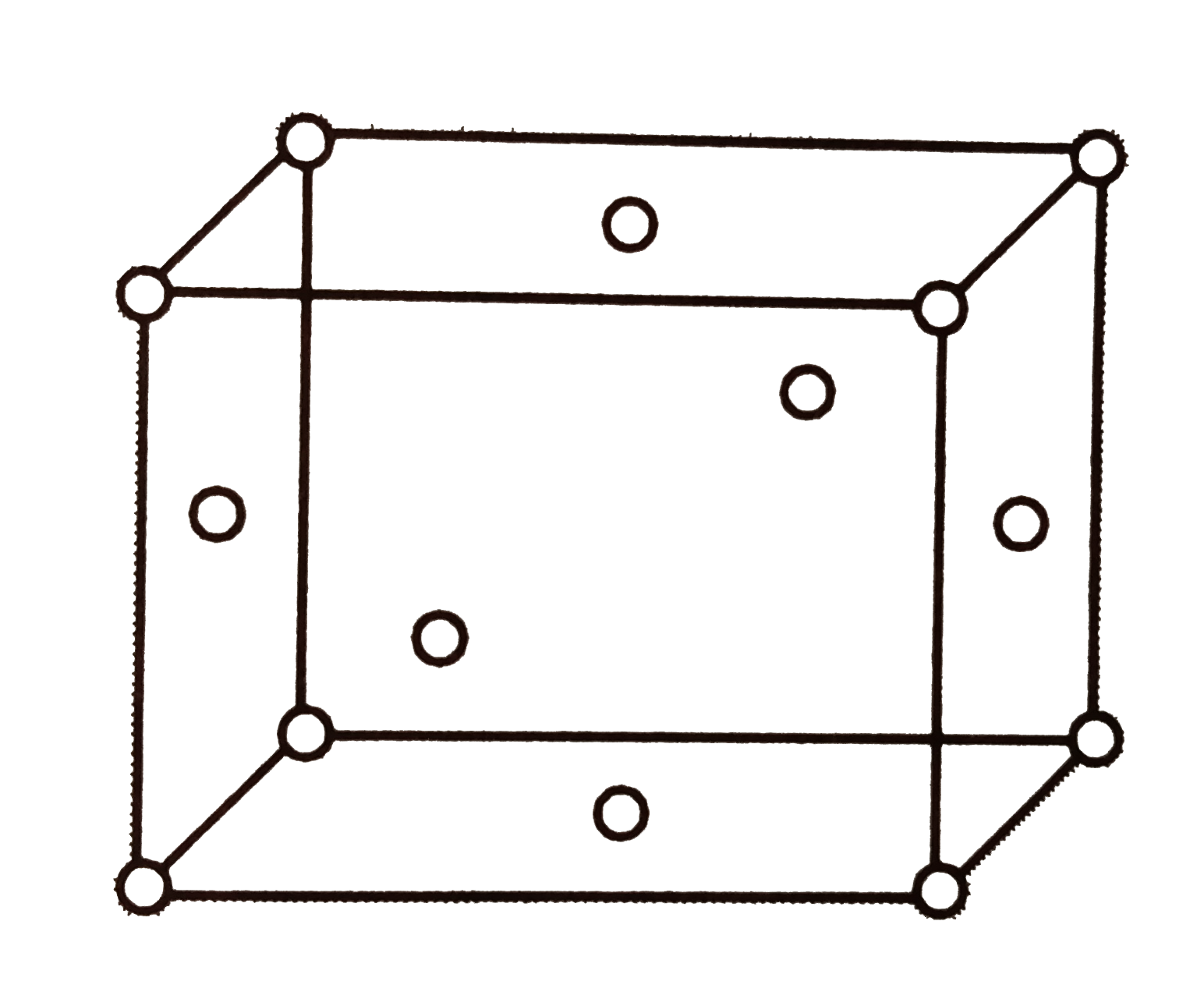In a covalent solid the lattice points are occupied by
atoms
ions
molecules
electrons
The correct Answer is:A
Step-by-Step Solution:
1. Understanding Covalent Solids:
- Covalent solids are a type of crystalline solid where the atoms are bonded together by covalent bonds. This means that the atoms share electrons to achieve stability.
2. Identifying Lattice Points:
- In a crystal lattice, the points at which the atoms are located are referred to as lattice points. In covalent solids, these lattice points are occupied by atoms.
3. Bonding in Covalent Solids:
- The atoms at the lattice points are not isolated; they are covalently bonded to neighboring atoms. This forms a continuous network throughout the solid.
4. Network Solids:
- Due to the extensive bonding between the atoms, covalent solids are often referred to as network solids. This is because the covalent bonds create a three-dimensional network that extends throughout the entire crystal.
5. Conclusion:
- Therefore, in a covalent solid, the lattice points are occupied by atoms.
Final Answer:
The lattice points in a covalent solid are occupied by atoms.
---
- Covalent solids are a type of crystalline solid where the atoms are bonded together by covalent bonds. This means that the atoms share electrons to achieve stability.
- In a crystal lattice, the points at which the atoms are located are referred to as lattice points. In covalent solids, these lattice points are occupied by atoms.
- The atoms at the lattice points are not isolated; they are covalently bonded to neighboring atoms. This forms a continuous network throughout the solid.
- Due to the extensive bonding between the atoms, covalent solids are often referred to as network solids. This is because the covalent bonds create a three-dimensional network that extends throughout the entire crystal.
- Therefore, in a covalent solid, the lattice points are occupied by atoms.
The lattice points in a covalent solid are occupied by atoms.
Similar Questions
Statement-1: Molecular solids have higher melting point than covalent solids
Statement-2:In molecular solids the lattice points are occupied by molecules.
View SolutionA : In molecular solids the lattice points are occupied by the atoms or molecules.
R : Molecular solids are generally sublime.
View SolutionOnly those atoms which four covalent bonds produce a repetitive three dimesional structure using only covalent bonds., e.g. , diamond structure.The latter is based on a FCC lattice where lattice points are occupied by carbon atoms.Every atom in this structure is surrounded tetrahedrally by four others.Germanium, silicon and grey tin also crystallize in the same way as diamond. (Given :NA=6×1023sin54∘44'=0.8164)
If edge length of the cube is 3.60Å, then radius of carbon atom is
View SolutionOnly those atoms which four covalent bonds produce a repetitive three dimesional structure using only covalent bonds., e.g. , diamond structure.The latter is based on a FCC lattice where lattice points are occupied by carbon atoms.Every atom in this structure is surrounded tetrahedrally by four others.Germanium, silicon and grey tin also crystallize in the same way as diamond. (Given :NA=6×1023sin54∘44'=0.8164)
If the edge length is 3.60Å, density of diamond crystal is
View SolutionTungsten has a body centered cubic lattice and each lattice point is occupied by one atom. Calculate the radius of metallic tungsten if density of tungsten is 19.30 g cm−3 and atomic weight is 183.9 g.
View SolutionAn example of covalent solid is:
View SolutionFor the structure of solid given below, if the lattice points represent A+ ions and the B− ioins occupy the tetrahedral voids, then coordination number of A is :

View SolutionA mineral having the formula AB2 crytallises in the cubic close-packed lattice, with the A atoms occupying the lattice points. What is the coordination number of the A atoms and B atoms ? What percentage fraction of the tetrahedral sites is occupied by B atoms ?
View SolutionA metallic crystal cystallizes into a lattice containing a sequence of layers ABABAB…. Any packing of spheres leaves out voids in the lattice. What percentage by volume of this lattice is occupied?
View SolutionAn alloy of copper and zinc solidifies in ccp structure, where copper occupies lattice points and zinc occupies 50% of the tetrahedral voids and all octahedral voids. Calculate the weight percentage of copper in the alloy.
View Solution
